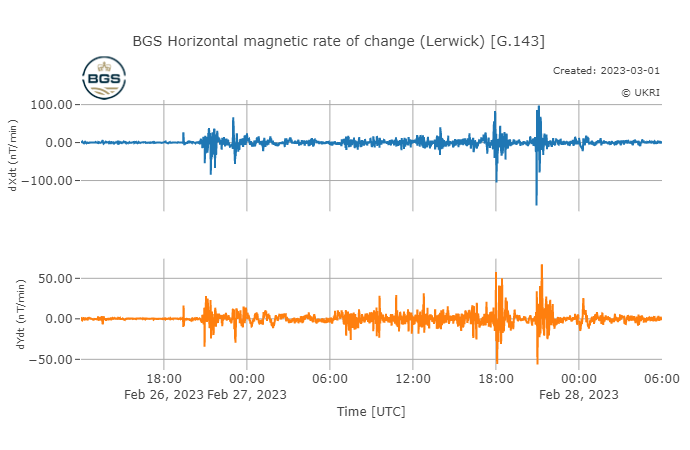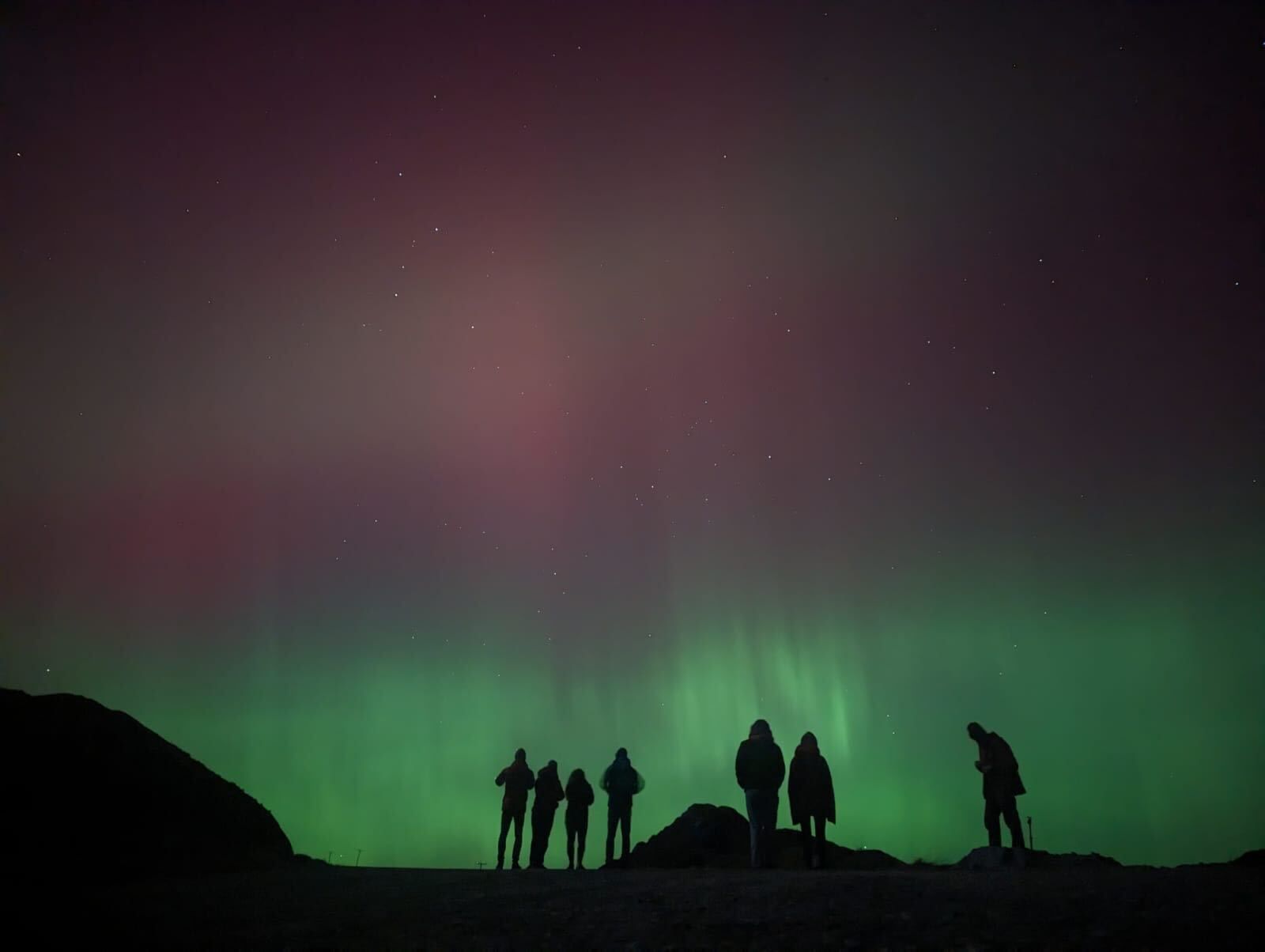Space Weather Alert Update - 1st March 2023
What Has Happened?
The coronal mass ejection (CME) that left the Sun on 25th Feb arrived at around 10:00 UT on 27th Feb. There was already a geomagnetic storm in progress at the time of its arrival due to a previous CME that left the Sun on 24th Feb.
The combined effects of these CMEs led to a prolonged increase in geomagnetic activity. The maximum rate-of-change in the magnetic field in the UK was 85.8 nT per minute, recorded at Lerwick observatory. There were aurora sightings over most of the UK (cloud permitting) on both nights of 26th and 27th Feb.
Conditions have now just about returned to background levels, with only a small chance of further enhancements for at least the next few days.
Sign-up to receive Geomagnetic Disturbance Alert emails.
Follow us on Twitter:
Follow @BGSauroraAlert for more occasional aurora alerts.
Follow @BGSspaceWeather for daily space weather forecasts.
Glossary
- BGS
- The British Geological Survey is one of the Natural Environment Research Council's Research Centres.
- CME or Coronal Mass Ejection
- The eruption of a portion of the outer atmosphere of the Sun into space, caused by rapid changes in its magnetic field. Often occurs along with a solar flare.
- Solar Wind
- The ever-present expansion of the Sun’s hot outer atmosphere into the solar system, which carries space weather within it.
- Solar Flare
- Energy released by the explosive reorganisation of magnetic fields within the Sun's atmosphere.
- Interplanetary magnetic field (IMF)
- The magnetic field carried with the solar wind.



